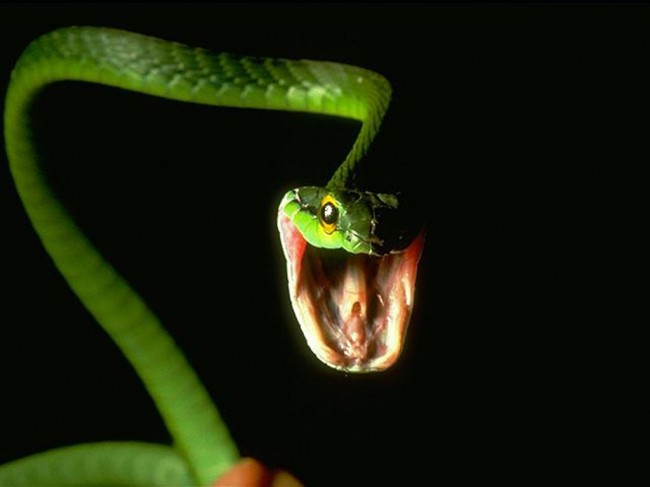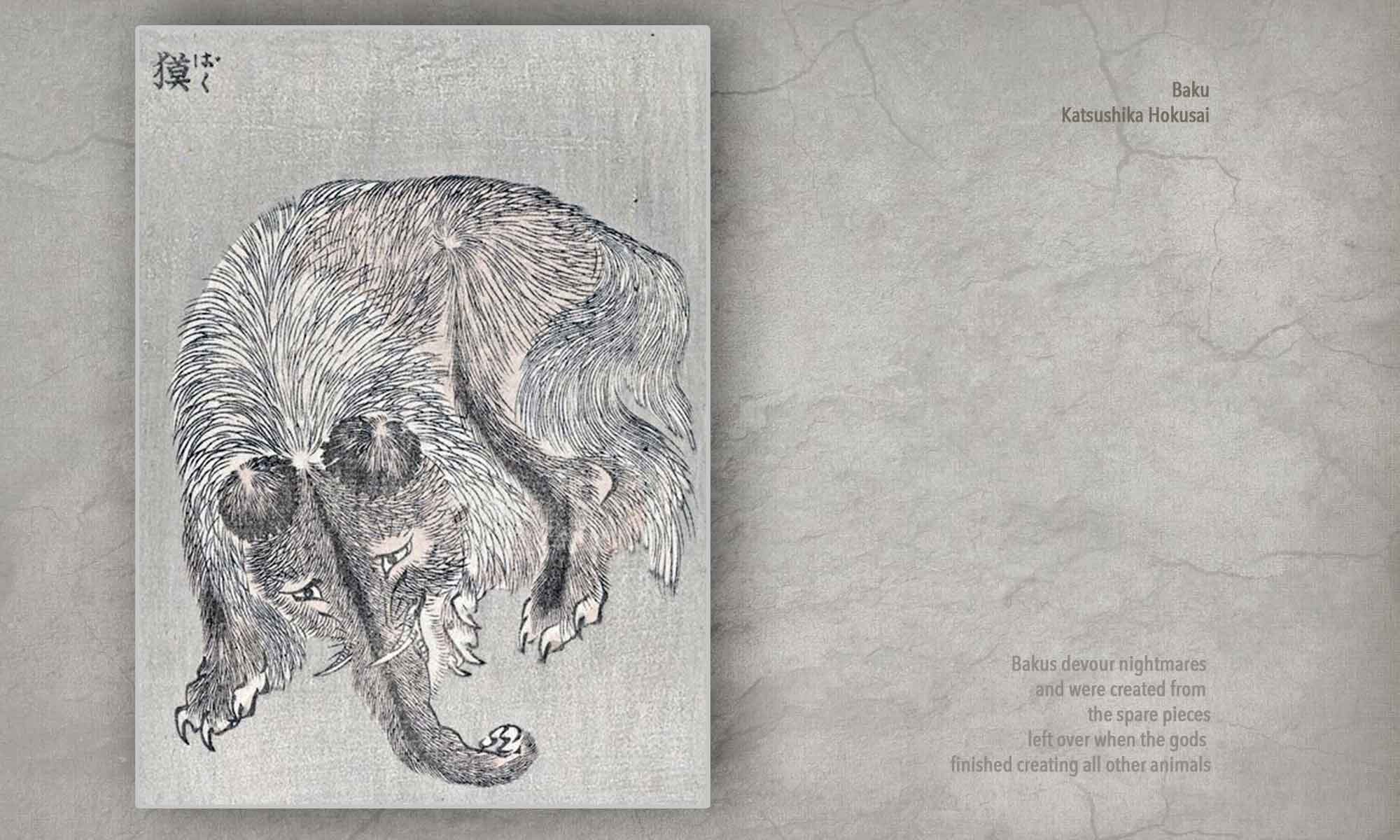
Below is a chapter about the history of snake dreams, using psychology and religious studies to explore their meanings. It comes from my book Spiritual Dreaming: A Cross-Cultural and Historical Journey.
If you are interested in how to interpret a dream of a snake, you might take a look at this post.
If you’d like to know what Carl Jung said about snake symbolism in The Red Book, read this post.
To learn more about actual snakes, check out the East Bay Vivarium.
Chapter 2: Snakes
Animals of various kinds appear in spiritually meaningful dreams. Birds, dogs, bears, wolves, fish, and even insects have come in people’s dreams to deliver important messages from the divine. But the animal that makes perhaps the most powerful spiritual impact in dreams is the snake. People from cultures all over the world report dreams in which they have intensely vivid encounters with snakes. Content analysis studies performed by Robert Van de Castle indicate that even in the dreams of modern Americans, who presumably have little direct contact with snakes, these animals appear with surprising frequency. [i] Many reports of snake dreams emphasize their strange, uncanny quality; the dreamer feels both attracted to and yet repelled by the serpent. As the following examples suggest, many people through history have regarded snake dreams as deeply spiritual experiences–for these dreams reveal the ambivalent nature of the sacred, its capacity to be a force of joyful creativity and violent destructiveness in human life.
1) A fifty year-old woman named Rosie Plummer, of the Paviotso people living on the Walker river reservation in Nevada, told anthropologist Willard Park of her shaman father. Rattlesnakes frequently came to him in his dreams and told him how to cure snake bites and other illnesses. Eighteen years after his death, Rosie started to dream about her father. “She dreamed that he came to her and told her to be a shaman. Then a rattlesnake came to her in dreams and told her to get eagle feathers, white paint, wild tobacco. The snake gave her the songs that she sings when she is curing. The snake appeared three or four times before she be lieved that she would be a shaman. Now she dreams about the rattlesnake quite frequently and she learns new songs and is told how to cure sick people in this way. [ii]
2) Lilias Trotter, a Christian missionary who worked in Algeria in the early part of the twentieth century, had these two dreams reported to her by Muslims who were converting to Christianity. A) Trotter says that an Algerian she knew named Boualem had been involved in an angry conflict with a neighbor. She wanted to help Boualem, but didn’t know how; then she says, “now God has dealt with the matter. Boualem told us that a dream had come. ‘I dreamed that a great snake was coiling round my foot and leg, and you [Trot ter] were there, and in horror I called to you. You said to the snake: “In the name of Jesus, let go.” It uncoiled and fell like a rope, and I woke almost dead with joy.’ And the shining of his face told that his soul had got free.” B) Trotter says, “Blind Houriya came this morning with ‘I want to tell you something that has frightened me very much. I dreamt it Saturday night, but I was too frightened to tell you yesterday. To-day my husband told me, “You must tell them.” I dreamed that a great snake was twisting round my throat and strangling me. I called to you [Trotter] but you said: “I cannot save you, for you are not following our road.” I went on calling for help, and one came up to me and loosened the snake from off my neck. I said: “And who is it that is saving me, and what is this snake?” A voice said: “I am Jesus and this snake is Ramadan [the Muslim ritual fasting period].”‘” [iii]
3) Henry Shipes was the son of an English father and a mother from the Maidu Indians of the Sierra Nevada mountains of Califor nia. He grew up at the end of the nineteenth century, during the gold rush era, when the indigenous Maidu culture was coming into conflict with white culture. Henry told anthropologist Arden King of various dreams in which he fought against native shamans who were jealous of his power. In one of these dreams, Henry “had a dream contest with a shaman who was also the headman at Quincy [a Sierra Nevada town]. In this dream Henry and the shaman were contesting with each other to see who had the most power. This was a fight to the death. The shaman acted first. He loosed a snake which pursued Henry Shipes, but was unable to catch him. Henry then tried his white power. This was stated by him to be specifically white. By ruse he caused the shaman to attempt the lifting of a bucket. The bucket exploded and the dream ended.” [iv]
4) The Egyptian Pharaoh Tanutamon is reported to have had the following dream experience in the first year of his reign, as presented by philologist A. Leo Oppenheim in his work on dreams in the ancient Near East: “His majesty saw a dream in the night: two serpents, one on his right, the other on his left. His majesty awoke, but he did not find them. His majesty said: ‘Why has this happened to me?'” His interpreters told him that the dream means that both Upper Egypt and Lower Egypt now belong to him. “Then his majesty said: “True indeed is the dream; it is beneficial to him who places his heart in it but evil for him who does not know it.” [v]
5) In Carthage in 203 A.D. Vibia Perpetua, a newly married woman of twenty-two years, and mother to an infant son, was imprisoned and sentenced to death for refusing to renounce her Christian faith. As she waited in prison for the day when she and other Christians would be cast into the arena and killed by wild beasts, her brother came and told her to ask God for a vision to reveal her fate. Perpetua agrees, and says she’ll tell him what she learns tomorrow. “And I asked for a vision, and this was shown to me: I saw a bronze ladder, marvellously long, reaching as far as heaven, and narrow too: people could climb it only one at a time. And on the sides of the ladder every kind of iron implement was fixed: there were swords, lances, hooks, cutlasses, javelins, so that if anyone went up carelessly or not looking upwards, he would be torn and his flesh caught on the sharp iron. And beneath the ladder lurked a serpent of wondrous size, who laid am bushes for those mounting, making them terrified of the ascent. But Saturs [a fellow martyr] climbed up first… And he reached the top of the ladder, and turned and said to me: ‘Perpetua, I’m waiting for you–but watch out that the serpent doesn’t bite you!’ And I said: ‘He won’t hurt me, in Christ’s name!’ And under that ladder, almost, it seemed, afraid of me, the serpent slowly thrust out its head–and, as if I were treading on the first rung, I trod on it, and I climbed. And I saw an immense space of garden, and in the middle of it a white-haired man sitting in shepherd’s garb, vast, milk ing sheep, with many thousands of people dressed in shining white standing all round. And he raised his head, looked at me, and said: ‘You are welcome, child.’ And he called me, and gave me, it seemed, a mouthful of the cheese he was milking; and I accepted it in both my hands together, and ate it, and all those standing around said: ‘Amen.’ At the sound of that word I awoke, still chewing some thing indefinable and sweet.” Perpetua tells her dream to her brother, and they both understand that she is to die for her faith. [vi]
